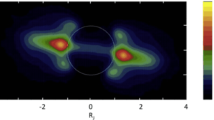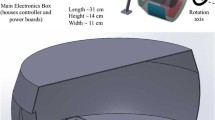Abstract
The European Space Agency Rosetta Spacecraft, launched on March 2, 2004 toward Comet 67P/Churyumov-Gerasimenko, carries a relatively small and lightweight millimeter-submillimeter spectrometer instrument, the first of its kind launched into deep space. The instrument will be used to study the evolution of outgassing water and other molecules from the target comet as a function of heliocentric distance. During flybys of the asteroids (2867) Steins and (21) Lutetia in 2008 and 2010 respectively, the instrument will measure thermal emission and search for water vapor in the vicinity of these asteroids.
The instrument, named MIRO (Microwave Instrument for the Rosetta Orbiter), consists of a 30-cm diameter, offset parabolic reflector telescope followed by two heterodyne receivers. Center-band operating frequencies of the receivers are near 190 GHz (1.6 mm) and 562 GHz (0.5 mm). Broadband continuum channels are implemented in both frequency bands for the measurement of near surface temperatures and temperature gradients in Comet 67P/Churyumov-Gerasimenko and the asteroids (2867) Steins and (21) Lutetia. A 4096 channel CTS (Chirp Transform Spectrometer) spectrometer having 180 MHz total bandwidth and 44 kHz resolution is, in addition to the continuum channel, connected to the submillimeter receiver. The submillimeter radiometer/spectrometer is fixed tuned to measure four volatile species – CO, CH3OH, NH3 and three, oxygen-related isotopologues of water, H2 16O, H2 17O and H2 18O. The basic quantities measured with the MIRO instrument are surface temperature, gas production rates and relative abundances, and velocity and excitation temperature of each species, along with their spatial and temporal variability. This paper provides a short discussion of the scientific objectives of the investigation, and a detailed discussion of the MIRO instrument system.
Similar content being viewed by others
References
Biver, N., Bockelée-Morvan, D., Colom, P., Crovisier, J., Henry, F., Lellouch, E. et al: 2002, Earth Moon and Planets 90, 5.
Bockelée-Morvan, D., Crovisier, J., Mumma, M.J., and Weaver, H.A.: 2004, In: Festou, M.C., Keller, H.U., and Weaver, H.A. (eds) Comets II, University of Arizona Press, p. 391.
Ehrenfreund, P., Charnley, S.B., and Wooden, D.: 2004, In: Festou, M.C., Keller, H.U., and Weaver, H.A. (eds.) Comets II, University of Arizona Press, p. 115.
Feldman, P.D., Cochran, A.L., and Combi, M.R.: 2004, In: Festou, M.C., Keller, H.U., and Weaver, H.A. (eds.) Comets II, University of Arizona Press, p. 425.
Hartogh, P.: 1997, In: Fujisada, H. (ed.) Sensors, Systems and Next-Generation Satellites, Proceedings of the SPIE, 3221, Washington, p. 328.
Hartogh, P., and Hartmann, G.K.: 1989, The Chirp Transform Spectrometer, MPAE-T-66-89-21, internal publication Max-Planck-Institut für Aeronomie, Lindau, Germany.
Hartogh, P., and Hartmann, G.K.: 1990, Meas. Sci. Technol. 1, 592.
Huebner, W.F.: 2004, Investigation of the Comet Nucleus-Coma Boundary Layer, Final Report NAG5-11052, internal report Southwest Research Institute, San Antonio, Texas, USA.
Irvine, W.M., Schloerb, F.P., Crovisier, J., Fegley, B., and Mumma, M.J.: 2000, In: Mannings, V., Boss, A.P., and Russel, S.S. (eds.) Protostars and Planets IV, The University of Arizona Press, Tucson, p. 1159.
Jack, M.A., Grant, P.M., and Collins, J. H.: 1980, Proc. Of the IEEE 68, 4.
Klauder, J.R., Price, A.C., Darlingtion, S., and Albersheim, W.J.: 1960, Bell Syst. Tech. J. 39, 745.
Mertz, L.: 1964, Transformations in Optics, New York, Wiley, p. 94.
Oswald J.E., Koch, T., Mehdi, I., Pease, A., Dengler, R.J., Lee, T.H. et al: 1997, IEEE Microwave and Guided Wave Letters 8(6), 232.
Prialnik, D., Benkhoff, J., and Podolak, M.: 2004, In: Festou, M.C., Keller, H.U., and Weaver, H.A. (eds.) Comets II, University of Arizona Press, p. 359.
Rosenkranz, P.W.: 1993, In: Janssen, M.A. (ed.) Atmospheric Remote Sensing by Microwave Radiometry, p. 37.
Yamamoto, T.: 1991, In: Newburn, R.L., Neugebauer, M., and Rahe, J. (eds.) Comets in the Post-Halley Era, Vol. 1., Kluwer Academic, p. 361.
Author information
Authors and Affiliations
Corresponding author
Rights and permissions
About this article
Cite this article
Gulkis, S., Frerking, M., Crovisier, J. et al. MIRO: Microwave Instrument for Rosetta Orbiter. Space Sci Rev 128, 561–597 (2007). https://doi.org/10.1007/s11214-006-9032-y
Received:
Accepted:
Published:
Issue Date:
DOI: https://doi.org/10.1007/s11214-006-9032-y




